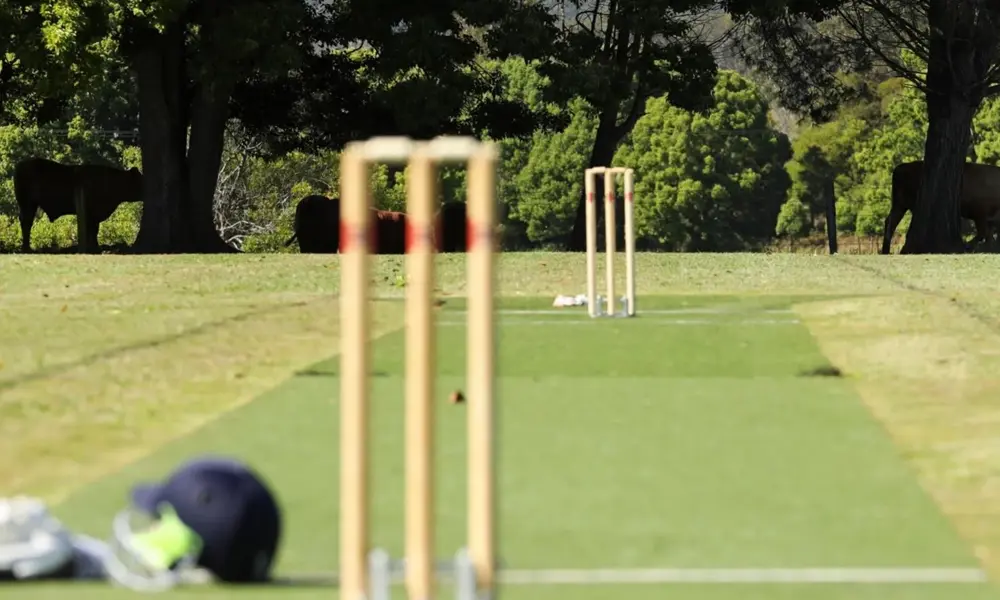The Art of Wicket-Keeping: The Unsung Hero Behind the Stumps

In the game of cricket, while batsmen dazzle with their elegant strokes and bowlers mesmerize with their precision, there's a silent guardian behind the stumps, whose skill and agility often go unnoticed but are essential for the team's success - the wicket-keeper. Often referred to as the unsung hero of the cricketing world, the wicket-keeper plays a pivotal role in every match, serving as the last line of defense and the eyes and ears of the captain. In this blog, we delve into the art of wicket-keeping, exploring the nuances and intricacies of this specialized position that requires a unique blend of athleticism, technique, and instinct.
The Keeper's Domain: Guarding the Wicket with Precision
The wicket-keeper's primary responsibility is to protect the stumps and prevent runs by collecting deliveries cleanly and swiftly behind the wicket. From fast-paced deliveries to spinning deliveries, the keeper must anticipate the trajectory and movement of the ball, positioning themselves accordingly to effect dismissals and prevent byes. With lightning-fast reflexes and cat-like agility, the keeper must be ready to pounce on any opportunity that comes their way, whether it's a faint edge from the bat or a lightning-fast stumping chance.
Mastering the Basics: Technique and Glovework
At the heart of wicket-keeping lies the mastery of technique and glovework, honed through hours of practice and repetition. From the correct stance behind the stumps to the precise movements of the hands and feet, every aspect of the keeper's technique is designed to maximize efficiency and minimize errors. The art of glovework involves not only catching the ball cleanly but also controlling its momentum and direction to prevent unnecessary runs and maintain pressure on the batting side. With meticulous attention to detail and relentless practice, keepers strive to achieve perfection in their craft, knowing that even the slightest lapse in concentration can result in a costly mistake.
Communication and Leadership: The Keeper's Role in the Field
Beyond their duties behind the stumps, wicket-keepers also play a crucial role in orchestrating the team's fielding strategy and tactics. As the eyes and ears of the captain, the keeper is uniquely positioned to observe the opposition's batting patterns and communicate insights and recommendations to the bowlers and fielders. Whether it's setting the field for specific batsmen, offering encouragement and support to teammates, or providing valuable feedback to the coaching staff, the keeper's leadership and communication skills are invaluable assets that contribute to the team's overall performance and success.
Moments of Brilliance: The Keeper's Impact on the Game
While batsmen and bowlers often hog the limelight with their flashy performances, wicket-keepers have their own moments of brilliance that leave a lasting impression on the game. Whether it's a stunning catch that defies gravity, a lightning-fast stumping that leaves the batsman stranded, or a clever piece of anticipation that results in a crucial run-out, the keeper's contributions can be game-changing and match-winning. With their ability to turn the tide of a game in an instant, keepers are often the unsung heroes whose contributions are felt far beyond the boundary ropes.
Conclusion: Celebrating the Artistry of Wicket-Keeping
As we celebrate the art of wicket-keeping, let us pay homage to the silent guardians behind the stumps whose skill, dedication, and passion for the game elevate cricket to new heights of excellence. From their lightning-fast reflexes to their keen tactical acumen, wicket-keepers embody the spirit of cricketing excellence and serve as shining examples of the artistry and athleticism that define the sport. As fans, players, and enthusiasts, let us celebrate the unsung heroes of cricket and their indispensable role in the beautiful game we all love.

